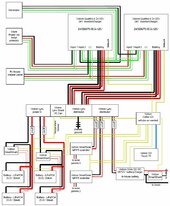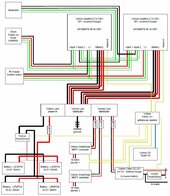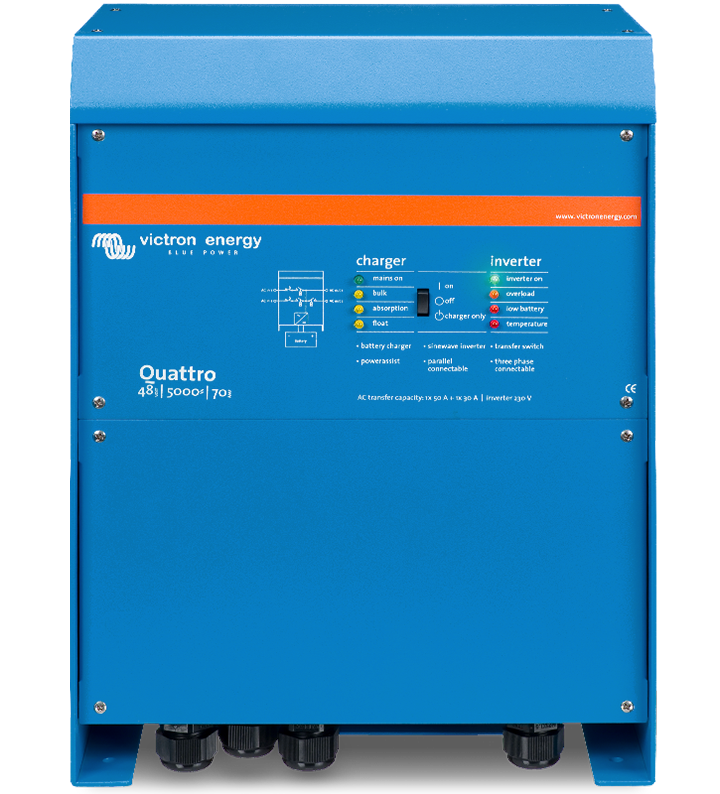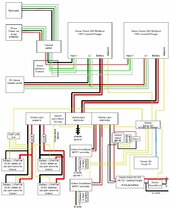SoggyShoes
New Member
Well here we go!
I have been spending a lot of time searching the internet and especially this forum over the last year and trying to figure all this stuff out. Now I am hoping to get some support in building my own system and, test what I learned from all the amazing discussions on this site.
I have a 2001 class-A 50amp motor-home that has two AC units and a 5,000W generator. The generator can run everything just fine. We have 12V&propane or 120V options for the heat, hot water, and fridge. We do a lot of boon docking or dispersed camping. We mostly need the 120V for the AC units. We have no TVs in the RV and really try use the RV to get away from all the screens except for navigation and in planning our next leg of the adventure.
Like everyone, we want it all, but have limited resources. So, I need to find that balance of providing what we need now with the best options to accommodate any future upgrades. We do not like hearing a generator at night and want to be able to run at least one AC unit when sleeping and driving without a generator.
I feel what would best in terms of need vs wants vs money is a system based on two Victron Quattro 24v 2x120V inverter/chargers. If money were no object, it seems the twin Quattro 5000/120V would be best, but I am pretty sure our current load usage will be fine with the two 2x120Vs. I realize this may change if we switched to a residential fridge, add kitchen appliances, or whatever we need to add that will keep our daughters wanting to go on trips with us.
I am planning on going with 24V because the Victron 2x120V units currently only have 12V or 24V models. Also, this would allow me to use Victron’s 24-12 smart charger for charging the house and chassis batteries and leave the 12V house system alone. It does not look like they make a 48-12 charger. I also am thinking of going 24V because the 48V batteries would be very heavy to manage. My plan is to build four 304Ah 25.6V batteries using EVE LF304 Grade A Cells. With 24V, each battery would be about 100 pounds, which is heavy but I could handle, but 200-pound 48V batteries are going to be a challenge.
So given all that, here is the system I have come up with. As a newbie, I would really appreciate any suggestions, support, and constructive criticism that will help me do this correctly. Hopefully, I will earn my stripes and be part of this really cool club!

I have been spending a lot of time searching the internet and especially this forum over the last year and trying to figure all this stuff out. Now I am hoping to get some support in building my own system and, test what I learned from all the amazing discussions on this site.
I have a 2001 class-A 50amp motor-home that has two AC units and a 5,000W generator. The generator can run everything just fine. We have 12V&propane or 120V options for the heat, hot water, and fridge. We do a lot of boon docking or dispersed camping. We mostly need the 120V for the AC units. We have no TVs in the RV and really try use the RV to get away from all the screens except for navigation and in planning our next leg of the adventure.
Like everyone, we want it all, but have limited resources. So, I need to find that balance of providing what we need now with the best options to accommodate any future upgrades. We do not like hearing a generator at night and want to be able to run at least one AC unit when sleeping and driving without a generator.
I feel what would best in terms of need vs wants vs money is a system based on two Victron Quattro 24v 2x120V inverter/chargers. If money were no object, it seems the twin Quattro 5000/120V would be best, but I am pretty sure our current load usage will be fine with the two 2x120Vs. I realize this may change if we switched to a residential fridge, add kitchen appliances, or whatever we need to add that will keep our daughters wanting to go on trips with us.
I am planning on going with 24V because the Victron 2x120V units currently only have 12V or 24V models. Also, this would allow me to use Victron’s 24-12 smart charger for charging the house and chassis batteries and leave the 12V house system alone. It does not look like they make a 48-12 charger. I also am thinking of going 24V because the 48V batteries would be very heavy to manage. My plan is to build four 304Ah 25.6V batteries using EVE LF304 Grade A Cells. With 24V, each battery would be about 100 pounds, which is heavy but I could handle, but 200-pound 48V batteries are going to be a challenge.
So given all that, here is the system I have come up with. As a newbie, I would really appreciate any suggestions, support, and constructive criticism that will help me do this correctly. Hopefully, I will earn my stripes and be part of this really cool club!

Attachments
Last edited:








